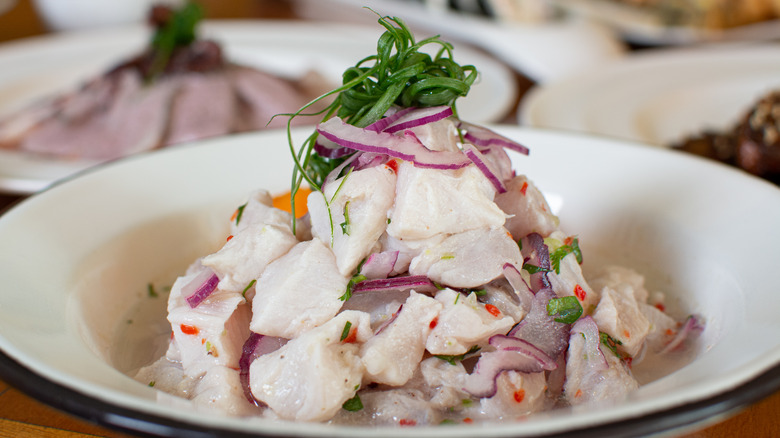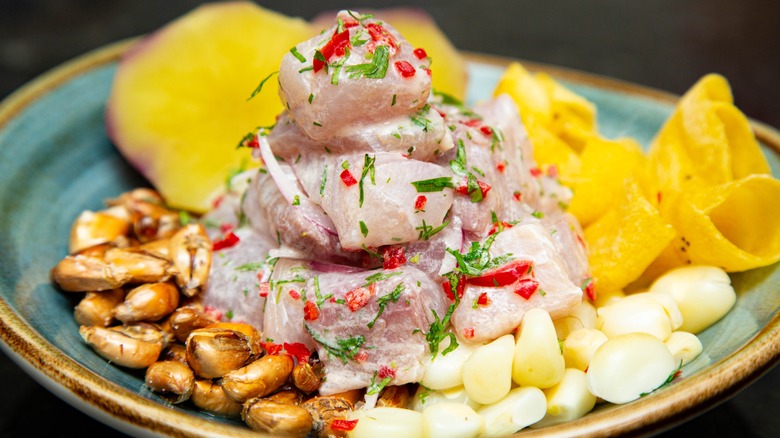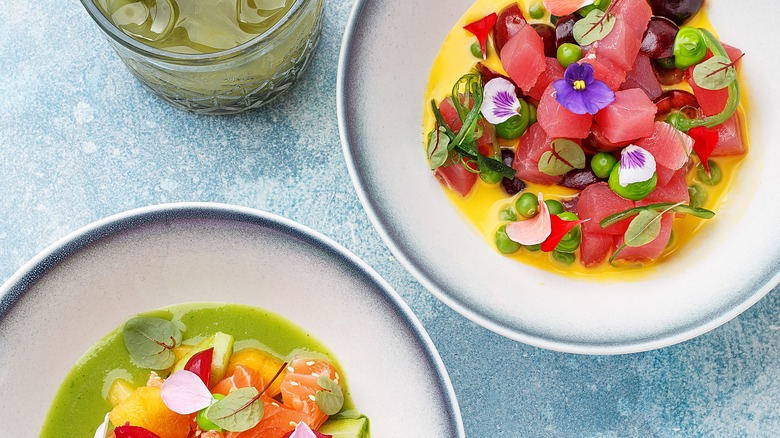The Marinating Mistake To Avoid When Making Ceviche
Ceviche is a delicious, refreshing Peruvian dish with Japanese influence that makes its way on to all sorts of menus. A dish consisting of raw fish, spices, and citrus juice in its most basic form, it's been done almost too many times to count. But that's part of the beauty of such a simple, yet fresh, dish — you can impart creative flare on it with ease.
A relatively simple formula opens itself up to a huge array of creative influence in restaurants and home kitchens alike. The types of fish used differentiate Mexican and Peruvian ceviche recipes, for instance.
Whether you eat your ceviche with a fork or with tortilla chips, it's a fresh, light dish that's satisfying in the hot months of summer and all year-round when you're craving the taste of the tropics. But despite having a relatively simple technique, there's one ceviche marinating mistake you should avoid.
Making homemade ceviche
It's easy to make a ceviche recipe at home, but there are a few things you need to keep in mind, starting with your desired seafood. Popular choices include tuna, shrimp, whitefish, and octopus.
When you make ceviche, you're using the acid from citrus juice to denature the proteins, similar to the process of heating, explains the Institute of Culinary Education. Choose your citrus juice (or a blend, such as a lime-orange juice combo), to combine with your fish and spices of choice. You can also add red onion, jalapeño peppers, or fresh mango.
Because you're not cooking the protein with heat, you need to watch it closely. The fish will change color, indicating the denaturation, but the biggest mistake you can make is marinating it for too long. Fish, especially shrimp and octopus, can get chewy — similar to when they are overcooked on the stove. Generally, you don't want to marinate ceviche for more than 20 minutes, per HuffPost. Cutting the fish into small pieces will speed up the "cook time," though you can also eat it sashimi-style with just a hint of flavor from the citrus by tossing and eating it immediately.
The regional types of ceviche
Now that you know what not to do with your homemade ceviche, it's time to dive into the two main types of ceviche so you can plan your meal. While the dish has Peruvian roots, per National Geographic, it became the dish it is today thanks to Japanese influence, too. It's popular on menus worldwide, especially in Mexico. While the base is relatively consistent, there are a few differences between Peruvian and Mexican ceviche, per Here.
Mexican ceviche usually uses seafood such as octopus or shrimp, while Peruvian ceviche commonly uses white fish such as sea bass, explains Miami-based restaurant Jaguar. Other add-ins, such as jalapeño peppers or tomatoes, are usually found in Mexican ceviche, and you're likely to find the dish served with tortilla chips in this style as well.
Peruvian ceviche, meanwhile, typically includes onion, aji peppers, or even a special kind of local white corn, per EatPeru. There's no right or wrong way to make this dish (as long as you don't over-marinate the fish, that is).


